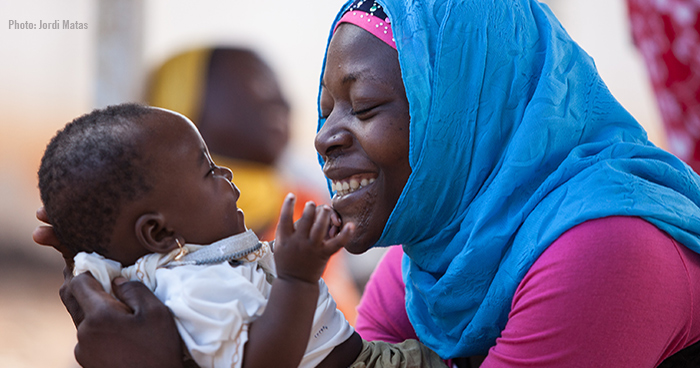
A mother and her baby from Mtwara, Tanzania, who received education and training on maternal and infant health .
Save the Children’s second annual End of Childhood Index correctly identifies poor nutrition as a major threat to a child’s development, adversely affecting their childhood and their future.
More than 51 million are acutely malnourished and 16 million are severely acutely malnourished making them nine times more likely to die from common infections.
Poor nutrition early in life can have long-term consequences not only for the child, but also for the family, the community and even the offspring. Globally, 151 million children are chronically malnourished or stunted because of poor nutrition during pregnancy and/or after birth, greatly impairing their physical and cognitive development. Malnutrition literally starves children from the nutrients needed to grow, learn and explore.
Fortunately, good nutrition in the 1,000-day period between a woman’s pregnancy and her child’s 2nd birthday, is a critical window of opportunity to give children the best start in life. The right nutrition jump starts brain development, builds a foundation for life-long health and supports more equal beginnings by breaking the cycle of poverty.
Below are three key reasons why the first 1,000 days matter:
1. A child’s brain and body grow more rapidly in the 1,000-day window than at any other point in human development and the right nutrients during this time frame fuel brain development.
2. Good nutrition early in life is a determinant of a child’s lifelong health. In its absence, poor nutrition increases the likelihood of obesity, diabetes and other diet-related non-communicable diseases later in life.
3. Finally, good nutrition can be a driver of economic development and help reduce inequality. It’s an investment in human capital that results in higher levels of achievement, helping to break the cycle of poverty.
Malnutrition and Inequality
When left unaddressed, malnutrition can be a vicious cycle. Malnourished mothers are more likely to have stunted children and stunted children are more likely to be malnourished as adults.
Stuck in this cycle, it’s unsurprising that Save the Children reports that almost universally, children from families living in poverty are more than twice as likely to be stunted as children from the wealthiest.
This disparity can be seen even in countries that have shown great progress against stunting. In Peru, a country which has made astounding progress to combat stunting, reducing its national stunting rate by 15 percentage points in less than ten years, the poorest children are still 11 times as likely to be stunted. Breaking these cycles and addressing inequality must start early.
Policymakers: Close the Gap
Just as the 1,000-day window is an opportunity to lock in benefits of development and health, it is also an opportunity to close the equity gap. Reducing poverty and addressing malnutrition should go hand in hand. Cash transfer programs, for instance, are an important means of improving economic security and promoting access to healthcare particularly for families living in poverty. When aligned with the 1,000-day window, targeted cash transfers for pregnant and lactating women and children under two can improve the health and nutrition of beneficiaries. Families with access to cash transfers consume a more diverse and higher quality diet since nutritious food is made more affordable by the transfer.
Each newborn that is brought into this world malnourished is already at a disadvantage to learn and earn in the future. The opportunity to break the cycle of poverty for the next generation starts now. Investments in programs that promote health and nutrition must be a top priority for policymakers, especially in communities that have been plagued by poverty and malnutrition for generations.